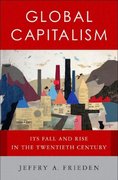the questions are indicated on the picture
Royal Ahold is a Dutch supermarket operator which began its international expansion in the 19705, acquiring related businesses throughout Europe, Asia, Latin America and the US, and eventually becoming the fourth largest retailer in the world in the early years of the millennium. Yet in 2007 the pressure of dissatisfied shareholders had forced the company to abandon its globalisation strategy and sell most of its US and other global operations to private equity firms. Critics point to unrealistic expectations of global scale economies (see Chapter 7) in food retailing, with purchasing economies available mainly on items provided by global suppliers to all markets - typically no more than 20% of all supermarket items. The need to match cultural differences in food tastes and methods of serving food products is important here. Critics also point to a failure by Royal Ahold to integrate effective management and IT systems across its far flung international operations, for example key suppliers were still able to charge Ahold different prices in different countries as recently as 2007.Daimler Benz (Germany) merged with Chrysler (US) in 1998 to create a global car company. Karl Benz had constructed the first automobile in 1886 at which time Gottlieb Daimler was active in the same field of business. After years of partnership their businesses were formally integrated in 1926 as the Daimler-Benz Company. In the 1980s Daimler-Benz pursued a strategy of diversification, acquiring MTU, AEG, the aeroplane company Dornier, MBB and Fokker, the latter completing the aviation arm of Daimler-Benz. The vision of the chairman (Mr Reuter) was to transform the firm from a carmaker into an integrated technology group along the lines of General Electric or the Japanese Mitsubishi conglomerate. His vision included generating cross-border synergies between the automobile, the aeroplane and electronics industry, exchanging skills and knowledge, and spreading the company's risks over the many businesses in its portfolio. On 6 May 1998 a new chapter in Daimler's M & A history began: Daimler-Benz AG and Chrysler Corporation announced their merger and the creation of the new DaimlerChrysler AG. Expected synergies included a more complete product portfolio, with DaimlerChrysler stronger in the high price end of the market and Chrysler in the medium to low price end. Indeed, except in the 'off-road" segment there were no product overlaps - rather the respective product portfolios complemented one another. This was also the case in terms of their geographical markets, with Chrysler a strong player in the NAFTA region, while Daimler-Benz was a leading company in Europe. DaimlerChrysler AG subsequently moved to acquire a third leg in the Asian market to consolidate its position in all regions of the triad. Further synergies were expected in fields such as procurement, common use of parts and sales. In the event, after years of poor financial returns, Chrysler was sold for $1 to the private equity firm Cerberus in 2007, with cultural dissonance between the German and US arms of the company cited by many as a key underlying factor in this corporate failure. A similar story can be recounted as regards the Dutch Financial services firm ABN Aggro, which acquired banks worldwide but failed to generate the expected return on its global investments. Critics point to unrealistic expectations of the Dutch bank being able to dominate overseas retail banking markets such as Italy and Brazil, when consolidation of local banks with other international banks had already taken place in these countries. ABN Amro was sold off, in 2007, with various parts going to Royal Bank of Scotland, Fortis (Belgium) and Banco Santander (Spain). * Questions: 1 Identify some of the factors lying behind these and other 'failures' of internationalization strategies in recent years. 2 Suggest approaches that might reduce the risks of such 'failures







